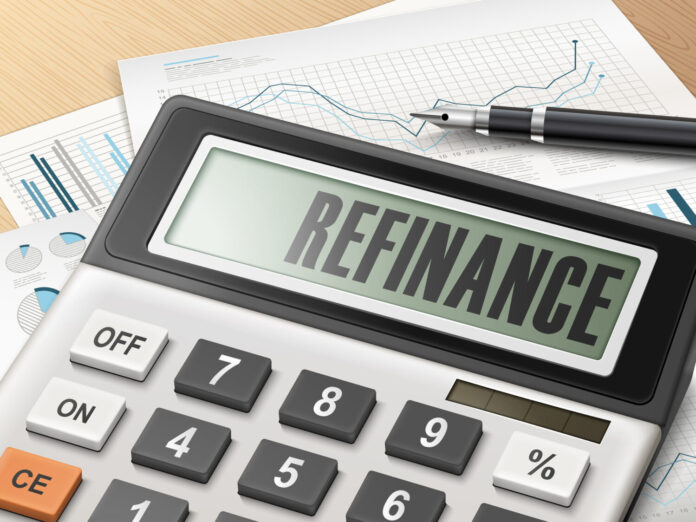Lately, I’ve been seeing a lot of positive press about refinancing and how it’s the greatest thing since sliced bread. Now, don’t get me wrong, it is a cool thing that consumers have access to. However, all the apparent amazing reviews really got me wondering if there was a catch to it.
Unsurprisingly, there are some caveats to be aware of. That’s why today, I would like to offer you a more wholistic perspective on what refinancing is, how it works, and both the positives and the negatives that come with it. After all, big financial decisions are something that we deserve to have as much information about as we possibly can.
What is Refinancing?

This is a question that’s pretty simple to answer, thankfully. Refinancing is a way to alter the initial contract that you’ve got on a loan. Now, it can take a few different forms based on what type of credit agreement that you want to do it for, but the general idea remains the same. If you’re already familiar with the concept even a little bit, I would guess you’ve probably heard about it as it relates to mortgages.
For the most part, the most common type of loan to refinance is a mortgage. That’s because of the large scope of them in general – I mean, they last for decades, so I can’t say it’s surprising that borrowers are interested in re-examining those contracts. Times change, and so do interest rates and our own credit scores.
Checking back in after a decade or two could net you a better offer for sure. In the process, you can either work with your current lender to alter your original contract, or you could work with a new creditor to get another loan to pay off the old one. The goal is for the new one to have a better interest rate and lower monthly payment (at least one of the two, if not both).
What’s the Catch?

Sounds totally amazing, right? I mean, you’re not wrong that it can be quite beneficial for borrowers, but there are some caveats that you should definitely keep in mind here. For one thing, there’s never a guarantee that you’ll be approved for refinancing.
Fact of the matter is, there are a ton of people who are applying for it right now. When you look at a country like Norway, for example, many folks are hoping to refinance their current debts to ease the burden of monthly payments or to get a better deal on their interest rate. Competition is inevitably a part of it, although it’s a sort of “indirect” version of competing with your fellow borrowers.
At the end of the day, there are only so many applications that will be approved by a given financial institution. One way to get around this is to apply to a bunch of different ones, but that does take time and energy. You’ll have to decide if you’re willing to do that.
With a lot of people applying comes long wait times, too. You might notice that it takes a little while longer than normal for the paperwork to process, and that’s because of the influx of people interested in these loans. Just something to be aware of.
Beyond that, though, there is a bit more to be aware of. As this blog explains, https://besterefinansiering.no/, you may also notice that your new contract has a different timeline than you expected in terms of the repayment period. Often, a lender who is refinancing a loan will extend the period of it so that they’re not losing out on money despite the revision to the contract.
This can be a pain, especially if you were getting close to paying it off in full. Adding on even a year of extra payments might not be feasible. Now, it’s hardly a dealbreaker most of the time, but it is something to be aware of as you fill out the applications. Once you get offers, read over them carefully.
What About the Good Stuff?

With the bad out of the way, we can shift our attention to the positive stuff that comes with refinancing. People wouldn’t do it if it was all negative, after all – I just wanted to be transparent about some of the roadblocks that you might face along the way. As far as the plus sides go, probably the biggest one is that you can ease some of your financial burden rather quickly.
For example, if your currently monthly payments are just too much at the moment (especially in the wake of the covid 19 pandemic, which is still leaving a lot of us scrambling to handle some of the bigger expenses in life), you might turn to refinancing to help fix that. It’s not a guarantee, still, but there’s always that chance of finding some relief. It’s worth at least trying.
You can specifically request having a lower monthly payment if that’s what you’re struggling with, and most lenders are willing to work with you on that at the least. You may not even have to open another loan to replace the previous debt, although that’s still on the table in some cases. When in doubt, just communicate openly and honestly with your creditor – they’re not out to get you.
Now, the other positive here is that you can actually end up reducing the interest rate being charged on your debt. That can be huge, though it’ll depend on how much of a reduction that you’re granted. Before you apply with that intent, though, keep a few things in mind here.
You’re more likely to get a lower interest rate if your credit score has improved since you first opened the account with your lender. This demonstrates to your creditor that you’ve grown since that initial application and contract and that you can be trusted to pay everything on time. In those circumstances, they’re much more likely to look upon the application kindly.
Really, that advice goes for refinancing in general, no matter your goal behind it. Now, if you haven’t made huge strides in improvement, that’s okay. It doesn’t mean you’ll get automatically rejected. However, it may take more than one submission to get approved given all that competition that I mentioned earlier.
Overall, refinancing can still be a great thing for a lot of borrowers. Sure, there are some hoops to jump through and some fine print that can get lost in the shuffle, but speaking generally, it tends to be worth all the trouble.






